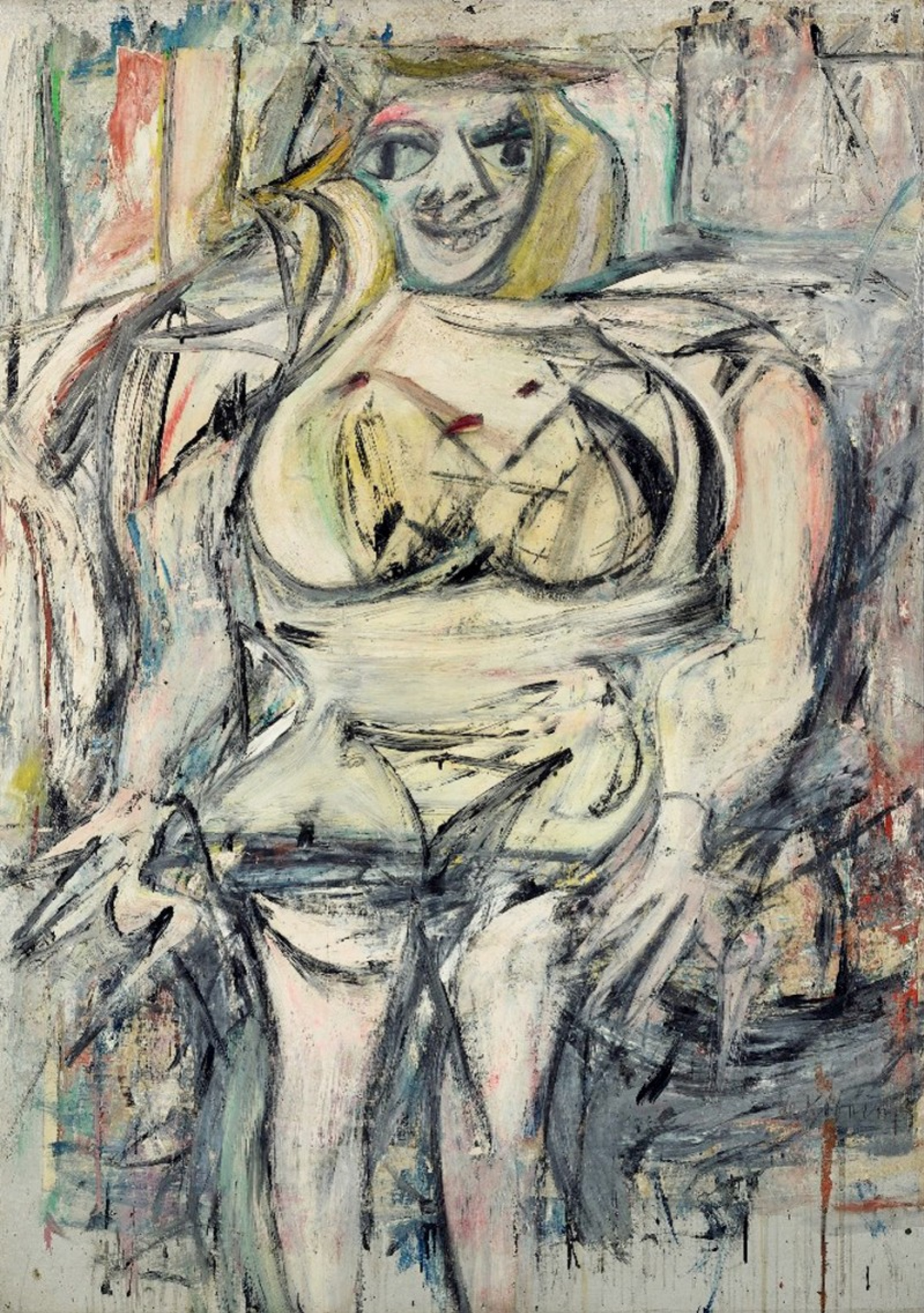Link to my Google Slides presentation:
https://docs.google.com/presentation/d/1sXp2IRmdGFoZ6ACPQcu_5wHAljANcJXVINY9JyVWdqk/edit?usp=sharing
Presentation handout:
Willem de Kooning’s Abstractionism in Woman III (1953)
Biography:
- 1904-1997 born in Netherlands
- Attended Rotterdam Academy of Fine Arts and Techniques for eight years
- 1926 de Kooning entered the United States as a stowaway and eventually settled in Hoboken, New Jersey where he supported himself as a house painter
- 1928 de Kooning began to paint still life and figure compositions
- 1930s he began exploring abstraction using biomorphic shapes and simple geometric compositions
- He was a leading exponent of Abstract Expressionism, particularly action painting
- Action painting is the spontaneous application of vigorous, sweeping brushstrokes and the chance of dripping and spilling paint onto the canvas
- 1938 de Kooning met Elaine Fried whom he married in 1943
- They heavily influenced each other’s art
- De Kooning was awarded many honors in his lifetime, including The Presidential Medal of Freedom in 1964
Early Works:
- Two Men Standing, Man
- 1938 de Kooning embarked on a series of sad, staring male figures
- Integration with spatial planes, lines, and time
- Seated Figure (Classic Male)
- 1941-1943 he struggled with classicism, the following of harmony, restraint, and adherence to standards of form and craftsmanship
- Shown through the torso
- Reducing it to an optical illusion to symbolize it making no sense in the modern world
- 1941-1943 he struggled with classicism, the following of harmony, restraint, and adherence to standards of form and craftsmanship
- Elegy
- 1939 early abstraction
- He takes things out, transforms them, and returns them to art on his own terms
- Surrealism – explore the creative potential of the unconscious mind
- Pink Angels
- 1945; done in the wake of World War II
- Evolution from figuration to abstraction
- Anatomical forms that have been torn apart or are in the process of colliding
- Possibly an eye or a part of a fish head in the bottom left corner, and a circle and rectangle in the bottom center next to a crab-like form in the bottom right
Woman III
- Savagely applied pigment
- Use of colors that seem randomly distributed on his canvas
- Reveals a woman all too congruent with some of modern man’s most widely held sexual fears
- Toothy snarls, overripe, pendulous breasts, vacuous eyes, and blasted extremities symbolizes Freudian insights
- Women were too far from the stereotypical image of the submissive American Housewives
- More realistic, despite abstractness
Critical Reception:
- Woman I–VI caused a sensation with its violent imagery and impulsive, energetic technique
- More of a chaotic effect than imitating the real world
- Maybe a chaotic representation because of his tensed relations with his mother growing up influencing his perception of all women
- Some saw the painting as a betrayal, a regression to an outmoded figurative tradition
- Others have called it misogynistic, interpreting it as objectifying and violent
- de Kooning himself said “Beauty becomes petulant to me. I like the grotesque. It’s more joyous”

Work Cited
Exhibit-E.com. “Biography – The Artist.” Willem de Kooning Foundation. Accessed February 25, 2020. https://www.dekooning.org/the-artist/biography.
Grunenberg, Christoph, Celia Stahr, and Joan Marter. “De Kooning Family.” Grove Art Online, 2003.https://www-oxfordartonline-com.ezproxy.lib.davidson.edu/groveart/view/10.1093/gao/9781884446054.001.0001/oao-9781884446054-e-7000021873#oao-9781884446054-e-7000021873.
Sidelnikov, Eugene. “Woman III by Willem De Kuning: History, Analysis & Facts.” Arthive. Accessed February 25, 2020. https://arthive.com/willemdekooning/works/373906~Woman_III.
The Editors of Encyclopaedia Britannica. “Willem De Kooning.” Encyclopædia Britannica. Encyclopædia Britannica, inc., December 9, 2019. https://www.britannica.com/biography/Willem-de-Kooning.
Vogel, Carol. “Landmark De Kooning Crowns Collection.” The New York Times. The New York Times, November 18, 2006. https://www.nytimes.com/2006/11/18/arts/design/18pain.html.
“Willem De Kooning.” MoMA, 2017. https://www.moma.org/artists/3213?locale=en.
“Willem De Kooning Artworks & Famous Paintings.” The Art Story. Accessed February 25, 2020. https://www.theartstory.org/artist/de-kooning-willem/artworks/.


